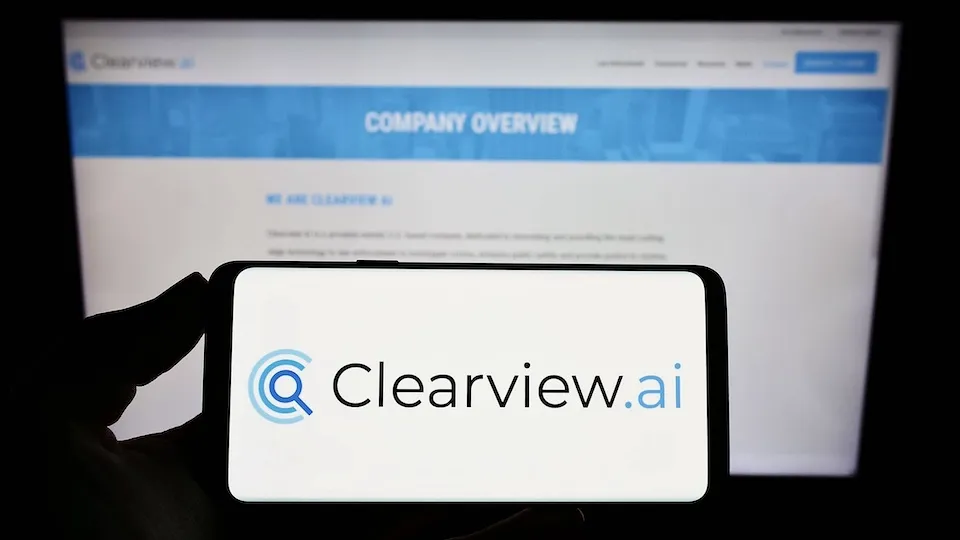
Fines for GDPR violations in AI systems and how to avoid them
- 16/10/2025
According to the Stanford Artificial Intelligence Index Report 2024, generative AI attracted $33.9 billion in private investment worldwide, which is 18.7% more than in 2023. Generative models are now used not only for advertising and content, but also in HR, medicine, and management decision-making.
Against this backdrop, the issue of privacy sounds particularly acute. How can we ensure the protection of personal data in a reality where algorithms can not only analyze, but also make decisions?
With the increased use of AI, concerns about protecting users’ personal data are also growing. European regulators are tightening control over General Data Protection Regulation (GDPR) compliance in the context of AI.
In this article, we will analyze five cases of fines for GDPR violations recorded from late 2024 to early 2025. Each of them is a real example that development teams, CPOs, and data protection specialists face. And each is an opportunity to understand how to work at the intersection of AI & Data Privacy without fear and with understanding.
LinkedIn – €310 Million Fine for Hidden Behavioral Profiling (October 2024)
What happened: LinkedIn tracked not only users’ social network activity (likes, posts, subscriptions), but also behavioral signals, for example, how long a person lingered on a post or how quickly they scrolled through their feed. These signals were used to determine personal characteristics (for example, interest in changing jobs, likelihood of professional burnout) and for predictive advertising delivery algorithms and internal ranking systems.
What went wrong: The Irish supervisory authority determined that this behavioral profiling was conducted without users’ consent and violated the principles of transparency, fairness, and purpose limitation according to Articles 5 and 6 of GDPR.
Result: A record fine of 310 million euros was issued. LinkedIn was also required to implement real-time consent mechanisms, overhaul the behavioral data collection system, and revise default advertising personalization settings.
Lesson: AI-based inferences even from seemingly “anonymous” behavioral patterns fall under GDPR if they are associated with identifiable individuals.
Meta (Facebook) – €251 Million Fine for 2018 Data Breach (September 2024)
What happened: In 2018, a vulnerability in Facebook’s “View As” feature allowed fraudsters to obtain access tokens to user accounts resulting in the disclosure of personal data of 29 million users (names, email addresses, phone numbers, locations, and search history). Although the vulnerability was quickly fixed, the legal consequences of the breach lasted for years.
What went wrong: The Irish supervisory authority concluded that Meta failed to implement “appropriate technical and organizational measures” to ensure a level of security appropriate to the risk (Article 32 GDPR).
Result: Meta was fined €251 million reflecting both the scale of the breach and its consequences. The company was also required to conduct an audit and report on its access control systems and token management practices.
Lesson: GDPR is not only about how you collect data but also how you protect it. Security issues, even in old legacy systems, can cost millions.
Clearview AI – €30.5 Million Fine for Illegal Collection of Biometric Data (September 2024)
What happened: Clearview AI created a massive facial recognition database using over 30 billion images collected from public websites including LinkedIn, Facebook, and even news sites without notification or consent from data subjects. The company claimed its services were intended only for law enforcement, but regulators saw the situation differently.
What went wrong: Biometric data falls under a special category of personal data according to Article 9 of GDPR. Its collection requires explicit consent or a very narrow legal exception. Clearview had neither. The Dutch supervisory authority also noted the absence of users’ rights to access and delete data.
Result: SA fined Clearview AI €30.5 million and gave a ban on processing data of Dutch citizens. Other EU countries are expected to issue similar rulings, effectively blacklisting Clearview from operating in the EU.
Lesson: Collecting public data does not exempt you from GDPR compliance. The source doesn’t matter, what matters is the identifiability and sensitivity of the data.

OpenAI (ChatGPT) – €15 Million Fine for Lack of Transparency and Minor Access (December 2024)
What happened: Italy’s Garante initially banned ChatGPT in March 2023, citing opaque data processing practices and lack of age verification for users. After negotiations and improvements from OpenAI, the service resumed operation, but investigations continued.
What went wrong: Garante concluded that OpenAI lacked a legal basis for processing European users’ data when training the model. The company also did not provide clear information about how data is used, stored, or deleted. Children could register without real age verification.
Result: A fine of €15 million was accompanied by a requirement for OpenAI to conduct a six-month public awareness campaign and implement stricter privacy protections across all its products.
What this teaches: The complexity of AI systems does not justify non-compliance. Policies must explain clearly and concisely how AI uses data, and users must have real control.
TikTok – €345 Million Fine for Mishandling Children's Data (September 2024)
What happened: TikTok was fined for allowing users under 13 to create accounts, upload videos, and interact with the platform without age verification or parental controls. Default profile settings made content and personal data publicly accessible.
What went wrong: According to GDPR, minors’ data must be processed with greater protection especially regarding consent and profiling. TikTok failed to protect these children’s rights, and its dark patterns discouraged users from changing privacy settings.
Result: The Irish supervisory authority fined TikTok €345 million and demanded a complete architectural overhaul, including default privacy settings for all minors and stricter age control mechanisms.
Lesson: Protecting children online is one of regulators’ top priorities. Platforms must go beyond a formal approach to demonstrate real steps to mitigate risk.
You can (and should) learn about privacy compliance violations before receiving a fine.
It’s enough to identify vulnerabilities in personal data protection approaches in time—before users, competitors, or regulators do. Especially when it comes to AI systems that evolve rapidly but don’t always develop with Privacy by Design principles in mind.
This is where AI Compliance Gap Assessment can help. An audit will show:
- where the AI system risks going beyond requirements,
- which processes need strengthening,
- and how to fix it with minimal costs and maximum benefit.
Check how well your AI meets privacy standards.
How to Build AI Systems with GDPR Compliance and Avoid Penalty?
Recent enforcement cases reveal not only technical shortcoming. They expose blind spots in ethics, accountability, and compliance. For AI system developers, we’ve prepared 8 practical recommendations to help you meet regulatory requirements and build user trust.
AI is subject to privacy laws —no exceptions
Even if your AI system doesn’t “look like” personal data processing, if it deals with identifiable or inferable user dat, it falls under GDPR.
Action: Conduct a Data Protection Impact Assessment (DPIA) before launching any AI project that processes personal data.
Be radically transparent
Users must know what data is collected and how it’s used, as well as how they’re affected by automated decisions. Vague or generic privacy notices aren’t enough.
Action: Create dedicated AI privacy notices with clear descriptions and visual explanations.
Make consent meaningful or don't rely on it
If you use consent as a legal basis, it must be freely given, specific, informed, and unambiguous. Bundled or pre-checked consent is invalid.
Action: Implement real-time consent dashboards where users can manage permissions for data used in AI features.
Biometric and behavioral data = high risk
Facial scanning, emotion analysis, eye movement tracking, and mouse cursor tracking — all of these are biometric or behavioral indicators and require enhanced protection standards under GDPR.
Action: Avoid collecting these categories unless essential. If necessary, apply encryption, access logs, and separation of duties.
Build age-aware systems
If your application or platform may attract underage users, age verification is mandatory.
Action: Implement age estimation or verification technologies and human moderation. Design interfaces that prevent excessive information disclosure by children.
Design for privacy from the start
Fixing mistakes is more expensive (in every sense) than preventing them from the outset. Build privacy principles into your product architecture: limit data storage, minimize data volume, and anonymize early.
Action: Integrate privacy by design principles into development but not just policies.
Document everything
From training data sources to algorithmic logic: GDPR requires accountability. If you can’t explain your model, regulators and users won’t trust it.
Action: Maintain internal AI audit trails including model versions, input data summaries, and key design decisions.
Anticipate bias and test for it
AI can unintentionally amplify discrimination especially in hiring, lending, or housing.
Action: Conduct fairness audits, simulate edge cases, and train teams to identify bias risks in data and outputs.
Anticipate bias and test for it
AI can unintentionally amplify discrimination especially in hiring, lending, or housing.
Action: Conduct fairness audits, simulate edge cases, and train teams to identify bias risks in data and outputs.
Conclusion
The future of AI will be built not only on innovation but also on responsibility. Regulators no longer tolerate vague promises and hidden algorithms. Building robust, privacy-focused systems is a competitive advantage.
Support and Assistance with AI and GDPR Compliance
In the context of new European AI regulations, it’s important not only to understand the legislation but also to promptly bring your systems into compliance. We’re ready to help you at every stage.
A practical course that will give you and your team clear knowledge about the Regulation, its risks, and ways to use AI safely. You’ll learn how to properly assess AI systems and comply with diverse requirements including GDPR in practice.
We have training options both for basic and advanced levels of understanding AI: in e-learning and live online formats. We teach the fundamentals of artificial intelligence and the principles of its regulation in Europe based on the EU AI Act. On trainings we can explain how privacy and AI systems are connected and how to minimize risks to personal data during their development.
Our experts will conduct a comprehensive audit of your AI systems, identify risks and non-compliance issues, and develop a personalized roadmap for bringing your business into compliance. This will help you avoid fines and protect your company’s reputation.


